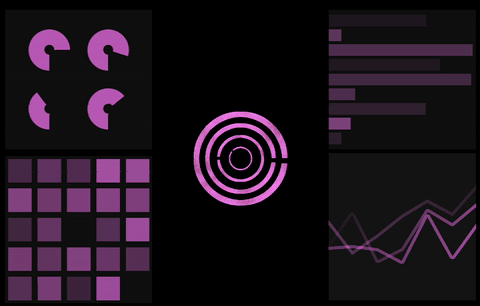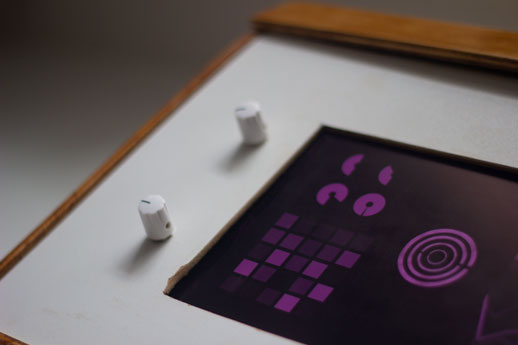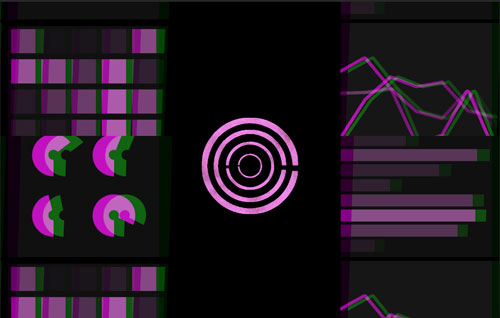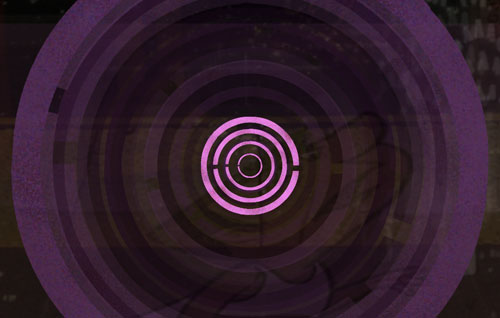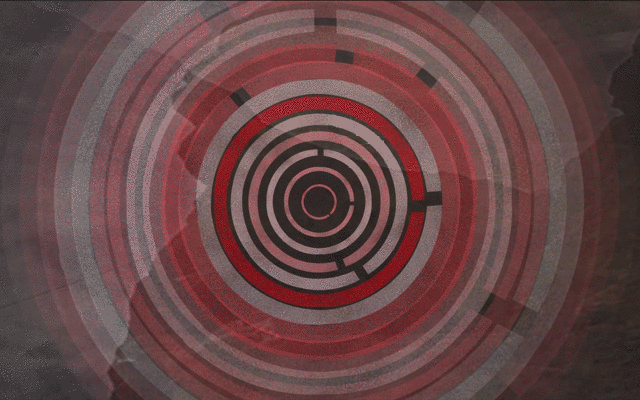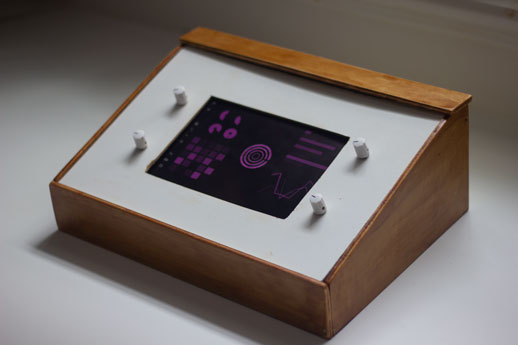Lest Ten Horizons Cry

Lest Ten Horizons Cry is an exploration in how we can explore game spaces with traditional electronic instrument interfaces.
Initially, users are presented with a custom-built boutique synthesizer. By turning the dials, the various sonic parameters can be adjusted, creating an ever-evolving sonic landscape. The large synthesizer screen displays simple, cryptic, but generally traditional visuals mapped to each of these physical dials
But underneath this all is something hidden.
Below the surface is a doorway to an unknown and secret history. Who has built this strange device, and what are they trying to tell us? At first the visualized parameters make sense, but over time the images on the screen distort, fragment, and morph into something else entirely, giving glimpses of images, text, and sounds that tell an entirely different story.
Listen.
Lest Ten Horizons Cry asks the question "what would a game controlled by a synthesizer looks like?" And the answer is "maybe like this?" Using only dials as an input-device presents some particular challenges (obvious movement limited to bi-directionality, for example). However, by keeping the interaction vague and experimental, we hope to create an experience for the player in which they are spending time exploring both the play and sonic spaces of the environment. Perhaps they notice the ways that sound influences on-screen visuals. Maybe they realize that these subtle changes in dial placement can have larger effects on the game environment. And hopefully these reflective insights help them glean insights about the gameworld and their impact on it and experience of it.
Lest Ten Horizons Cry was developed in collaboration with the Whaaat!? Lab of the ATLAS Institute at CU Boulder.
Lest Ten Horizons Cry is nominated for the 13th International A MAZE. Awards
Team
- M Bethancourt - Programming, Hardware, Sound and Game Design
- Danny Rankin - Visual and Sound Design
- L Bethancourt - Hardware Design
